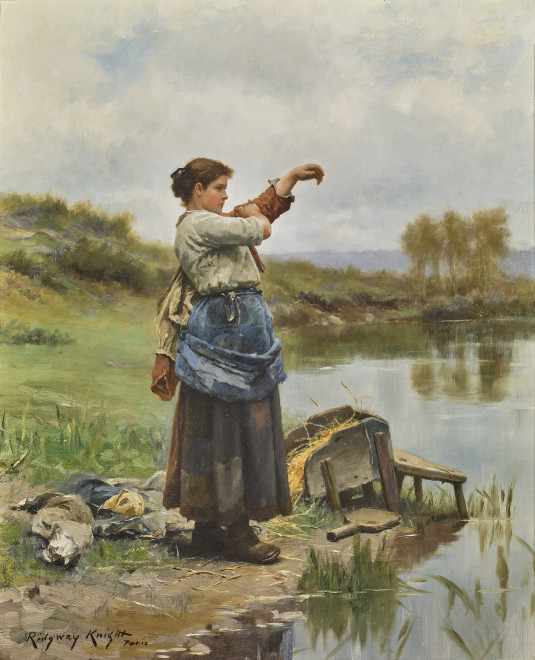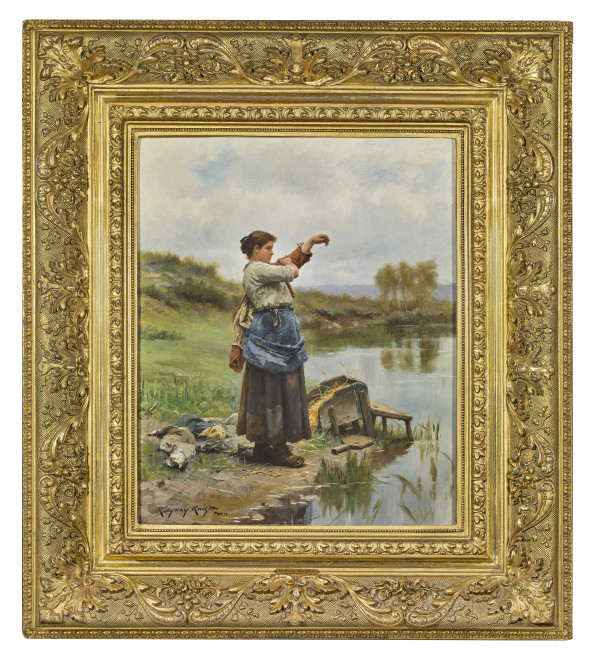Here, we see a young peasant girl, who has come to the banks of the river to do her laundry. Next to her is a laundry paddle and the three-sided box or caisse. She would kneel in the box to allow her skirt to stay dry as she scrubbed her laundry.
Provenance
Boussod, Valadon & cie, 1889 (acquired directly from the artist no. 19933)
William Buchanan, New York (acquired from the above in New York, 23 December 23, 1889 for 2860 francs) and his sale: New York, American Art galleries, 18 April, 1912, lot 72
C.J. McDonough (acquired at the above sale for $600)
John J. Harrington
M. Knoedler & Co., New York (consigned by the above on October 9, 1925 as Girl washing, no. C5826)
L. C. Phipps, Washington (acquired from the above for $750)
J.J. Gillespie Company Fine Art Galleries, Pittsburg, PA
W.H. Remmel, 1934
Mr. & Mrs. Norman E. Sharp, New York
Then by descent
Spanierman Gallery, LLC.
Sale: Boston, Skinner, Inc., 27 September, 1996, lot 493, $22,000
Private Collection, Toronto, Canada
Catalogue note
Born in Philadelphia, Daniel Ridgeway Knight spent most of his adult life in France. As a young art student at The Pennsylvania Academy of The Fine Arts, he studied alongside Thomas Eakins, the artist who would come to define American painting at this time. Ridgeway Knight, on the other hand, followed a different course. His inspiration came from France, especially Paris, the center of the art world at the time. It was a place of tradition and also innovation; he was lured there to continue his artistic training in the greatest Paris ateliers, thereby leading him to become more of a French painter than an American one. The outbreak of The Civil War brought him back to Philadelphia, and when he returned to France in 1871, he stayed there for the rest of his life.
In the 1870s, Ridgeway Knight settled in Poissy, a town on the Seine located northwest of Paris. It was here where he would paint scenes of the French rural population, primarily the female workers who toiled in the fields; they would be his primary subjects for the rest of his career. Our painting most likely dates to the 1880s when Ridgeway Knight was living in Poissy. The subject of a washerwoman was a theme he repeated several times. Here, we see a young peasant girl, who has come to the banks of the river to do her laundry. Next to her is a laundry paddle and the three-sided box or caisse. She would kneel in the box to allow her skirt to stay dry as she scrubbed her laundry. Often these boxes were padded with straw to cushion the knees. This is a scene that Ridgeway Knight would have witnessed first-hand, but the final painting would have been completed in his studio using a local model and studio props.
.




